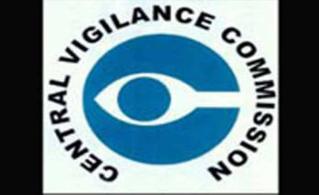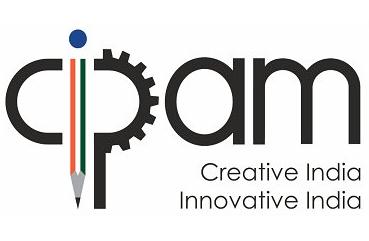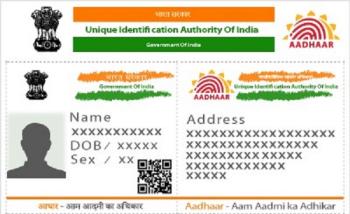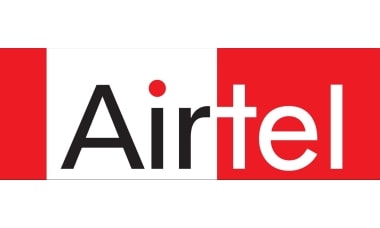▼ PFMS: Public Finance Management System for all CSS Govt schemes [10-30-17]
 The Union Minister for Finance and Corporate Affairs announced the mandatory use of Public Finance Management System (PFMS) for all the Central Sector Schemes of the Government of India would help in tracking and monitoring the flow of funds to the implementing agencies.
Central Sector Schemes with a budgetary outlay of Rs.6, 66,644 crore covers over 31 percent of the total Central Government expenditure during the current financial year 2017-18.
PFMS, with the capability of providing real time information on resource availability, flows and actual utilization has tremendous potential to improve programme/financial management, reduce the float in the financial systems by enabling 'just in time' releases and also the Government borrowings with direct impact on interest costs to the Government.
PFMS will progress towards a Government wide Integrated Financial Management System (GIFMIS) - as a comprehensive Payment, Receipt and Accounting System.
PFMS is poised to develop as one of the biggest Financial Management Systems of the world, which is critical for bringing about a transformational accountability and transparency in the Government Financial Management Systems and promoting overall Good Governance.
To date payments to 34.19 crore beneficiaries have been made through PFMS and there are 21.72 lakh Programme Implementing Agencies registered on PFMS.
For the first time, Annual Accounts of the Central Government for the Financial Year 2016-17 have been signed before 31st October, 2017.
The PFMS Scheme has been rolled-out by the Controller General of Accounts (CGA) at the behest of Finance Ministry, Department of Expenditure as a cherished Public Finance Management (PFM) reform in the country.
Considering the diversity and multiplicity of channels through which money is spent/transferred (including through Direct Benefit Transfer), the PFMS is designed to serve the pertinent need of establishing a common electronic platform for complete tracking of fund flows from the Central Government to large number of programme implementing agencies, both under Central Government and the State Governments till it reaches the final intended beneficiaries.
The mandatory PFMS on-boarding for the remaining Schemes and Programmes including the Centrally Sponsored Schemes is also targeted to be achieved in a phased manner. The Union Minister for Finance and Corporate Affairs announced the mandatory use of Public Finance Management System (PFMS) for all the Central Sector Schemes of the Government of India would help in tracking and monitoring the flow of funds to the implementing agencies.
Central Sector Schemes with a budgetary outlay of Rs.6, 66,644 crore covers over 31 percent of the total Central Government expenditure during the current financial year 2017-18.
PFMS, with the capability of providing real time information on resource availability, flows and actual utilization has tremendous potential to improve programme/financial management, reduce the float in the financial systems by enabling 'just in time' releases and also the Government borrowings with direct impact on interest costs to the Government.
PFMS will progress towards a Government wide Integrated Financial Management System (GIFMIS) - as a comprehensive Payment, Receipt and Accounting System.
PFMS is poised to develop as one of the biggest Financial Management Systems of the world, which is critical for bringing about a transformational accountability and transparency in the Government Financial Management Systems and promoting overall Good Governance.
To date payments to 34.19 crore beneficiaries have been made through PFMS and there are 21.72 lakh Programme Implementing Agencies registered on PFMS.
For the first time, Annual Accounts of the Central Government for the Financial Year 2016-17 have been signed before 31st October, 2017.
The PFMS Scheme has been rolled-out by the Controller General of Accounts (CGA) at the behest of Finance Ministry, Department of Expenditure as a cherished Public Finance Management (PFM) reform in the country.
Considering the diversity and multiplicity of channels through which money is spent/transferred (including through Direct Benefit Transfer), the PFMS is designed to serve the pertinent need of establishing a common electronic platform for complete tracking of fund flows from the Central Government to large number of programme implementing agencies, both under Central Government and the State Governments till it reaches the final intended beneficiaries.
The mandatory PFMS on-boarding for the remaining Schemes and Programmes including the Centrally Sponsored Schemes is also targeted to be achieved in a phased manner.
|
▼ CVC to launch integrity index for public sector organisations [10-26-17]
 In line with the broader strategy and emphasis on preventive vigilance, the Central Vigilance Commission (CVC) believes that the next level of systemic change can be through the tool of Integrity Index.
The CVC has therefore decided to go in for development of the Integrity Index-based on bench-marking of internal processes and controls within an organisation as well as management of relationships and expectations of outside stakeholders.
The Integrity Index will bring out annual scores/rankings of Public Sector Undertakings/Public Sector Banks and Financial Institutions/Departments/Ministries of Government of India by linking the essential drivers of vigilance with long term efficiency, profitability and sustainability of public organizations and create an internal and external ecosystem that promotes working with Integrity in public organizations.
CVC has adopted a research-based approach for creating an integrity index that various organizations can use to measure themselves and which will evolve with changing needs.
With this view IIM-Ahmedabad has been engaged to develop the Integrity Index.
Being a new initiative, initially 25 organizations have been selected for development of the Integrity Index (as per list attached).
Subsequently, it is proposed to extend the Integrity Index concept to all other CPSUs and organizations of Government of India.
The management of all 25 organizations have been involved in the development of Integrity Index.
Integrity Index: Know More
The main objectives for which the Integrity Index is to be established are:
1. Define what constitutes Integrity of Public Organizations
2. Identify the different factors of Integrity and their inter-linkages
3. Create an objective and reliable tool that can measure the performance of organizations along these above factors
4. Validate the findings over a period of time to improve upon the robustness of the tool that measures Integrity
5. Create an internal and external ecosystem that promotes working with Integrity where public organizations lead the way.
List of 25 Selected Organizations for Development of Integrity Index In line with the broader strategy and emphasis on preventive vigilance, the Central Vigilance Commission (CVC) believes that the next level of systemic change can be through the tool of Integrity Index.
The CVC has therefore decided to go in for development of the Integrity Index-based on bench-marking of internal processes and controls within an organisation as well as management of relationships and expectations of outside stakeholders.
The Integrity Index will bring out annual scores/rankings of Public Sector Undertakings/Public Sector Banks and Financial Institutions/Departments/Ministries of Government of India by linking the essential drivers of vigilance with long term efficiency, profitability and sustainability of public organizations and create an internal and external ecosystem that promotes working with Integrity in public organizations.
CVC has adopted a research-based approach for creating an integrity index that various organizations can use to measure themselves and which will evolve with changing needs.
With this view IIM-Ahmedabad has been engaged to develop the Integrity Index.
Being a new initiative, initially 25 organizations have been selected for development of the Integrity Index (as per list attached).
Subsequently, it is proposed to extend the Integrity Index concept to all other CPSUs and organizations of Government of India.
The management of all 25 organizations have been involved in the development of Integrity Index.
Integrity Index: Know More
The main objectives for which the Integrity Index is to be established are:
1. Define what constitutes Integrity of Public Organizations
2. Identify the different factors of Integrity and their inter-linkages
3. Create an objective and reliable tool that can measure the performance of organizations along these above factors
4. Validate the findings over a period of time to improve upon the robustness of the tool that measures Integrity
5. Create an internal and external ecosystem that promotes working with Integrity where public organizations lead the way.
List of 25 Selected Organizations for Development of Integrity Index
| Sl. No. | Sector | | Name of CPSE/Ministry/PSB etc |
|---|
| 1 | Oil and Gas | 1 | IOCL | | 2 | ONGC | | 2 | Power | 3 | NTPC | | 4 | PGCIL | | 3 | Coal | 5 | Eastern Coalfields | | 6 | Western Coalfields | | 4 | Steel | 7 | SAIL |
| 5 | Banks | 8 | PNB | | 9 | Syndicate Bank | | 6 | Transport | 10 | NHAI | | 11 | Mumbai Port Trust | | 12 | RVNL | | 13 | M/o Railways | | 7 | Mining | 14 | NMDC | | 15 | NALCO | | 8 | Defence | 16 | BEL | | 9 | Dept of Heavy Industry | 17 | BHEL | | 10 | Commerce and Textiles | 18 | CCI | | 11 | Social Sector | 19 | FCI | | 20 | EPFO | | 21 | MCI | | 12 | Communication | 22 | MTNL | | 13 | Urban Development & Local bodies | 23 & 24 | DDA and South MCD | | 14 | Financial Sector | 25 | CBDT |
|
▼ Ministry for Commerce and Industry launches CIPAM website [10-25-17]
 The Minister for Commerce and Industry, Shri Suresh Prabhu launched the official website for the Cell for IPR Promotion and Management (CIPAM) of the Department of Industrial Policy and Promotion (DIPP).
CIPAM has been set up under the aegis of DIPP with a mandate to effectively implement the National Intellectual Property Rights (IPR) Policy.
The website is interactive providing regular updates on all upcoming events including awareness and sensitization programs being conducted, as also information on all Intellectual Property Rights.
It would make available resource material on IPRs specially curated for various levels: schools, universities, industry and enforcement agencies.
The website provides regular updates on the latest IP trends-statistics on applications filed, examined, grants and disposal for various IPRs.
It would provide information on the various initiatives being taken by the Government to strengthen the IPR regime in the country. The Minister for Commerce and Industry, Shri Suresh Prabhu launched the official website for the Cell for IPR Promotion and Management (CIPAM) of the Department of Industrial Policy and Promotion (DIPP).
CIPAM has been set up under the aegis of DIPP with a mandate to effectively implement the National Intellectual Property Rights (IPR) Policy.
The website is interactive providing regular updates on all upcoming events including awareness and sensitization programs being conducted, as also information on all Intellectual Property Rights.
It would make available resource material on IPRs specially curated for various levels: schools, universities, industry and enforcement agencies.
The website provides regular updates on the latest IP trends-statistics on applications filed, examined, grants and disposal for various IPRs.
It would provide information on the various initiatives being taken by the Government to strengthen the IPR regime in the country.
|
▼ Banks to check original ID for transactions above INR 50,000 [10-24-17]
 The Government has made it mandatory for banks and financial institutions to check the original identification documents of individuals dealing in cash above the prescribed threshold.
Individuals carrying out transactions above Rs 50, 000 will have to furnish their original identity proofs to the banks.
For this, The Department of Revenue in the Finance Ministry has issued a gazette notification making an amendment to the Prevention of Money-laundering (Maintenance of Records) Rules. Under this order, it will be necessary for all financial institutions to match the official identity card and their photocopy.
The new rule now requires the reporting entity to compare "the copy of officially valid (identification) document so produced by the client with the original and recording the same on the copy".
highlights
The Aadhaar number and other official documents are required to be obtained by the reporting entities from anyone opening a bank account as well as for any financial transaction of INR 50,000 and above.
Moreover, furnishing an ID proof is also mandatory for all cash dealing of more than INR 10 lakh or its equivalent in foreign currency, cash transactions were forged or counterfeit currency notes have been used and all suspicious transactions.
PMLA and New Gazette Notification: Know More The Government has made it mandatory for banks and financial institutions to check the original identification documents of individuals dealing in cash above the prescribed threshold.
Individuals carrying out transactions above Rs 50, 000 will have to furnish their original identity proofs to the banks.
For this, The Department of Revenue in the Finance Ministry has issued a gazette notification making an amendment to the Prevention of Money-laundering (Maintenance of Records) Rules. Under this order, it will be necessary for all financial institutions to match the official identity card and their photocopy.
The new rule now requires the reporting entity to compare "the copy of officially valid (identification) document so produced by the client with the original and recording the same on the copy".
highlights
The Aadhaar number and other official documents are required to be obtained by the reporting entities from anyone opening a bank account as well as for any financial transaction of INR 50,000 and above.
Moreover, furnishing an ID proof is also mandatory for all cash dealing of more than INR 10 lakh or its equivalent in foreign currency, cash transactions were forged or counterfeit currency notes have been used and all suspicious transactions.
PMLA and New Gazette Notification: Know More
- To put an end to money laundering and black money menace, the Prevention of Money Laundering Act, 2002 was implemented.
- The PMLA and its rules impose an obligation on reporting entities like banks, financial institutions and intermediaries to verify the identity of clients, maintain records and furnish information to Financial Intelligence Unit of India (FIU-IND).
- The Gazette notification said in case the officially valid document furnished does not contain the updated address, a utility bill like electricity, telephone, post-paid mobile phone, piped gas or water bill which is not more than two months old can be considered as a proof of address.
- Every reporting entity shall at the time of commencement of an account-based relationship, identify its clients, verify their identity and obtain information on the purpose and intended nature of the business relationship as per Rule 9. Intermediaries like stockbroker, chit fund company, cooperative bank, housing finance institution and non-banking finance companies are also classified as reporting entities.
- All cross-border wire transfers of more than INR 5 lakh in foreign currency and purchase and sale of immovable property valued at INR 50 lakh or more also fall under this category, according to the reporting rules.
- RBI also confirmed that it is mandatory to link bank accounts to Aadhaar. The RBI issued a statement in the wake of some news reports quoting a reply to a Right To Information (RTI) application that Aadhaar number linkage with bank accounts is not mandatory.
|
▼ Women SHGs now to get loan at 7% interest: RBI [10-23-17]
 The Reserve Bank of India (RBI) on Oct 18, 2017 announced banks will provide funds to women SHGs (self help groups) in rural areas at 7 percent under the Deendayal Antyodaya Yojana - National Rural Livelihoods Mission (DAY-NRLM) in the current fiscal.
The central bank issued the revised guidelines on interest subvention scheme under DAY-NRLM, as received from the Ministry of Rural Development for implementation by 21 public sector banks and 19 private banks.
All women SHGs will be eligible for interest subvention on credit up to INR 3 lakh at 7 percent per annum.
Banks will lend to all the women SHGs in rural areas at the rate of 7 percent.
Banks will be subvented to the extent of difference between the Weighted Average Interest Charged and 7 percent subject to the maximum limit of 5.5 percent for the year 2017-18.
This subvention will be available to banks on the condition that they make SHG credit available at 7 percent per annum.
The Ministry of Rural Development in consultation with state governments will harmonise State specific interest subvention schemes, if any, in line with the central scheme.
The interest subvention scheme on credit to women SHG during 2017-18 is applicable in 250 districts across the country.
NRLM: Know More The Reserve Bank of India (RBI) on Oct 18, 2017 announced banks will provide funds to women SHGs (self help groups) in rural areas at 7 percent under the Deendayal Antyodaya Yojana - National Rural Livelihoods Mission (DAY-NRLM) in the current fiscal.
The central bank issued the revised guidelines on interest subvention scheme under DAY-NRLM, as received from the Ministry of Rural Development for implementation by 21 public sector banks and 19 private banks.
All women SHGs will be eligible for interest subvention on credit up to INR 3 lakh at 7 percent per annum.
Banks will lend to all the women SHGs in rural areas at the rate of 7 percent.
Banks will be subvented to the extent of difference between the Weighted Average Interest Charged and 7 percent subject to the maximum limit of 5.5 percent for the year 2017-18.
This subvention will be available to banks on the condition that they make SHG credit available at 7 percent per annum.
The Ministry of Rural Development in consultation with state governments will harmonise State specific interest subvention schemes, if any, in line with the central scheme.
The interest subvention scheme on credit to women SHG during 2017-18 is applicable in 250 districts across the country.
NRLM: Know More
- Aajeevika - National Rural Livelihoods Mission (NRLM) was launched by the Ministry of Rural Development in June 2011.
- Aided in part through investment support by the World Bank, the Mission aims at creating efficient and effective institutional platforms of the rural poor.
- It is enabling them to increase household income through sustainable livelihood enhancements and improved access to financial services.
|
▼ MCX launches option's contract in gold this Dhanteras [10-23-17]
 Finance minister Arun Jaitley on 17th Oct 2017 launched an option's contract in gold on the Multi Commodity Exchange (MCX) on the auspicious occasion of Dhanteras.
Options are an instrument that give the buyer a right to buy or sell an underlined at a present price on a future date.
They are of two types: calls (right to buy) and puts (right to sell).
According to market experts, options are also a much better hedging instrument as compared to futures for hedgers.
Gold option contract, with Gold (1 Kg) futures as underlying, expiring on November 28, 2017 and January 29, 2018 are made available for trading from Oct 17.
The launch denotes one of the most significant reform measures since modern commodity derivatives trading started 14 years ago.
The introduction of options gives a strong impetus towards systematic development and transformation of commodity derivatives market in India, ushering in a new era in price risk management in response to stakeholder expectations.
The industry has waited for this new instrument since year 2003 when then NDA government opened up the Indian commodities market.
More commodities option launch may be in line.
To start with, the options trading will be available on a 1 kg gold futures contract, the exchange said in a statement.
In August, commodity and capital market regulator Securities and Exchange Board of India (SEBI) allowed MCX to launch options trading in gold while the competing agriculture commodity-focused NCDEX was given permission to launch options trading in guar seed.
Traders can hedge their risks at a fraction of the cost in options compared to futures contracts.
The launch of options is also expected to boost volumes in futures contracts.
As with equity derivatives, investors will have two types of options - call and put - to invest.
If an investor sees gold prices rising, then he can buy into a call option and take a position in a put option if he expects a bearish trend.
In both cases, if the expectation of price movements comes true, the premiums on options will go up and investors will benefit.
Each option expiry shall have a minimum 31 strikes available - 15 each for In-the-Money (ITM) and Out-of-Money (OTM), and one At-the-Money (ATM).
Gold options will have a position limit of 10 tonnes for clients and 100 tonnes for members.
This price range covers wide price movements during contract time but most liquidity and trading usually happens at ITM or the price around which relevant futures are traded.
OTM means far from the trading range and ITM means within the trading range.
Interestingly, this development comes exactly after 14 years of futures launch in the country that commenced in 2003.
Gold Option will be available in Mega Gold Contract and not in any other gold variants such as gold mini.
All options on maturity will devolve into futures or become futures contract, if not squared off before the given time-frame.
After it becomes futures, all norms of futures will apply. Finance minister Arun Jaitley on 17th Oct 2017 launched an option's contract in gold on the Multi Commodity Exchange (MCX) on the auspicious occasion of Dhanteras.
Options are an instrument that give the buyer a right to buy or sell an underlined at a present price on a future date.
They are of two types: calls (right to buy) and puts (right to sell).
According to market experts, options are also a much better hedging instrument as compared to futures for hedgers.
Gold option contract, with Gold (1 Kg) futures as underlying, expiring on November 28, 2017 and January 29, 2018 are made available for trading from Oct 17.
The launch denotes one of the most significant reform measures since modern commodity derivatives trading started 14 years ago.
The introduction of options gives a strong impetus towards systematic development and transformation of commodity derivatives market in India, ushering in a new era in price risk management in response to stakeholder expectations.
The industry has waited for this new instrument since year 2003 when then NDA government opened up the Indian commodities market.
More commodities option launch may be in line.
To start with, the options trading will be available on a 1 kg gold futures contract, the exchange said in a statement.
In August, commodity and capital market regulator Securities and Exchange Board of India (SEBI) allowed MCX to launch options trading in gold while the competing agriculture commodity-focused NCDEX was given permission to launch options trading in guar seed.
Traders can hedge their risks at a fraction of the cost in options compared to futures contracts.
The launch of options is also expected to boost volumes in futures contracts.
As with equity derivatives, investors will have two types of options - call and put - to invest.
If an investor sees gold prices rising, then he can buy into a call option and take a position in a put option if he expects a bearish trend.
In both cases, if the expectation of price movements comes true, the premiums on options will go up and investors will benefit.
Each option expiry shall have a minimum 31 strikes available - 15 each for In-the-Money (ITM) and Out-of-Money (OTM), and one At-the-Money (ATM).
Gold options will have a position limit of 10 tonnes for clients and 100 tonnes for members.
This price range covers wide price movements during contract time but most liquidity and trading usually happens at ITM or the price around which relevant futures are traded.
OTM means far from the trading range and ITM means within the trading range.
Interestingly, this development comes exactly after 14 years of futures launch in the country that commenced in 2003.
Gold Option will be available in Mega Gold Contract and not in any other gold variants such as gold mini.
All options on maturity will devolve into futures or become futures contract, if not squared off before the given time-frame.
After it becomes futures, all norms of futures will apply.
|
▼ Airtel to get bigger with Tata acquisition [10-13-17]
 The country’s largest operator Bharti Airtel on Oct 12, 2017 stated it would acquire the loss-making consumer mobile business of the Tata Group on a ‘debt-free, cash-free’ basis, while taking on some spectrum-related cost.
The deal, which is Bharti Airtel’s seventh acquisition in the past five years, will entail the operator paying a “small portion” of unpaid spectrum liability of the Tatas, estimated at INR 2,000 crore.
All past liabilities and dues would be settled by the Tatas, the companies said in a joint statement, adding that Airtel would acquire 40 million subscribers of Tata Teleservices Ltd. and Tata Teleservices Maharashtra Ltd. across 19 circles.
These circles represent the bulk of India’s population and customer base,
Tata Teleservices has a debt of about INR 31,000 crore.
The proposed merger will include transfer of all the customers and assets of the Tatas’ consumer mobile business to Bharti Airtel.
It will also enable Bharti Airtel to further bolster its strong spectrum footprint with the addition of 178.5 MHz spectrum (of which 71.3 MHz is liberalised) in the 850, 1800 & 2100 MHz bands.
The deal is likely to help Bharti Airtel narrow the gap with the Vodafone-Idea combined entity that would have about 400 million customers once the merger is concluded.
Bharti Airtel Deal: Know More The country’s largest operator Bharti Airtel on Oct 12, 2017 stated it would acquire the loss-making consumer mobile business of the Tata Group on a ‘debt-free, cash-free’ basis, while taking on some spectrum-related cost.
The deal, which is Bharti Airtel’s seventh acquisition in the past five years, will entail the operator paying a “small portion” of unpaid spectrum liability of the Tatas, estimated at INR 2,000 crore.
All past liabilities and dues would be settled by the Tatas, the companies said in a joint statement, adding that Airtel would acquire 40 million subscribers of Tata Teleservices Ltd. and Tata Teleservices Maharashtra Ltd. across 19 circles.
These circles represent the bulk of India’s population and customer base,
Tata Teleservices has a debt of about INR 31,000 crore.
The proposed merger will include transfer of all the customers and assets of the Tatas’ consumer mobile business to Bharti Airtel.
It will also enable Bharti Airtel to further bolster its strong spectrum footprint with the addition of 178.5 MHz spectrum (of which 71.3 MHz is liberalised) in the 850, 1800 & 2100 MHz bands.
The deal is likely to help Bharti Airtel narrow the gap with the Vodafone-Idea combined entity that would have about 400 million customers once the merger is concluded.
Bharti Airtel Deal: Know More
- Bharti Airtel, which is also in the process of acquiring the India operations of Norway’s Telenor, has about 300 million subscribers with a market share of about 24%.
- The Bharti Airtel-Tata’s CMB combined entity is likely to have a market share of about 27-28%, against the estimated 34% of the Vodafone-Idea combined entity.
- The deal will also help the firm widen its lead over the Mukesh Ambani-led Reliance Jio.
- Tata CMB’s operations and services will continue as normal until the completion of the transaction, the companies said, adding that the deal was subject to regulatory approvals.
|
▼ Amul brand's GCMMF bestowed IAA honour [10-13-17]
 India’s largest food products marketing organisation, Gujarat Co-operative Milk Marketing Federation Ltd (GCMMF), which markets the Amul brand of milk and milk products, has been recognised as the country's best Fast Moving Consumer Goods (FMCG) company in the food sector.
This recognition is accorded by the International Advertising Association (IAA).
Amul was presented the Fifth IAA Leadership Award for this recognition at Mumbai.
The prestigious awards instituted by the IAA’s India Chapter recognise excellence towards contribution in marketing, advertising and media sectors as well as celebrate outstanding achievements of individuals and teams.
Amul and GCMMF: Know More India’s largest food products marketing organisation, Gujarat Co-operative Milk Marketing Federation Ltd (GCMMF), which markets the Amul brand of milk and milk products, has been recognised as the country's best Fast Moving Consumer Goods (FMCG) company in the food sector.
This recognition is accorded by the International Advertising Association (IAA).
Amul was presented the Fifth IAA Leadership Award for this recognition at Mumbai.
The prestigious awards instituted by the IAA’s India Chapter recognise excellence towards contribution in marketing, advertising and media sectors as well as celebrate outstanding achievements of individuals and teams.
Amul and GCMMF: Know More
- Amul is India's largest food brand with annual brand turnover of Rs 38,000 crore. It is a cooperative milk federation of 36 lakh milk producers of Gujarat.
- The turnover of GCMMF has registered a quantum growth of 238 per cent in the last seven years, which implies an impressive cumulative average growth rate (CAGR) of 19 per cent during this period.
- Also, Amul has successfully quadrupled the income of its dairy farmers in the last seven years, demonstrating the efficacy of its model in exceeding the country’s goal of doubling farmer’s income in six years.
- Amul is not only synonymous with the best cooperative model and farmer’s faith in cooperative structure but also with marketing and advertising strategies it has adopted to make it the most preferred brands of dairy products.
- GCMMF is currently procuring 180 lakhs litres of milk per day through 18,600 village dairy cooperative societies.
International.
|
▼ What is Choppiness Index? [10-5-17]
 This refers to an index used by traders in financial markets to determine whether prices are trending in a particular direction, either upward or downward, or are moving sideways in a choppy manner.
The choppiness index was created by Australian commodity trader E.W. Dreiss to determine the strength of a trend in any market.
Traders generally prefer to trade in the direction of the trend, buying when prices trend up or selling short when prices trend down, and use the index to find the right entry and exit points for a profitable trade.
The choppiness index is used in combination with other technical indicators to identify a change in the prevailing market direction. This refers to an index used by traders in financial markets to determine whether prices are trending in a particular direction, either upward or downward, or are moving sideways in a choppy manner.
The choppiness index was created by Australian commodity trader E.W. Dreiss to determine the strength of a trend in any market.
Traders generally prefer to trade in the direction of the trend, buying when prices trend up or selling short when prices trend down, and use the index to find the right entry and exit points for a profitable trade.
The choppiness index is used in combination with other technical indicators to identify a change in the prevailing market direction.
|
▼ What is weekend effect in finance? [10-4-17]
 The “weekend effect” refers to a phenomenon observed in financial markets wherein the returns that investors earn on stocks on Mondays is lower than what they earned on them on the previous Friday.
There are many theories that have been proposed by market experts to explain the prevalence of the weekend effect.
Some attribute lower returns on Mondays to the fact that companies usually release bad news on Fridays after the market closes, so the news has its negative impact on the stock price on Monday rather than on Friday.
Others have disputed the validity of the weekend effect arguing either that it never existed or that its impact has tended to fade over the years. The “weekend effect” refers to a phenomenon observed in financial markets wherein the returns that investors earn on stocks on Mondays is lower than what they earned on them on the previous Friday.
There are many theories that have been proposed by market experts to explain the prevalence of the weekend effect.
Some attribute lower returns on Mondays to the fact that companies usually release bad news on Fridays after the market closes, so the news has its negative impact on the stock price on Monday rather than on Friday.
Others have disputed the validity of the weekend effect arguing either that it never existed or that its impact has tended to fade over the years.
|